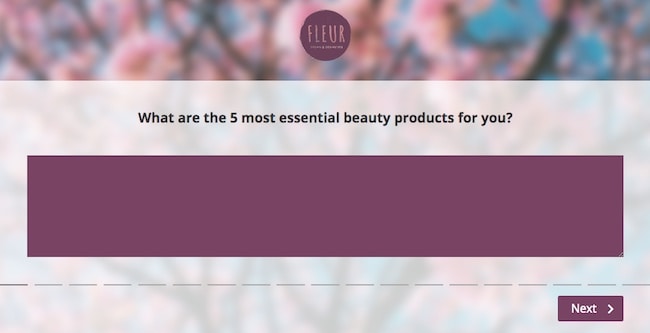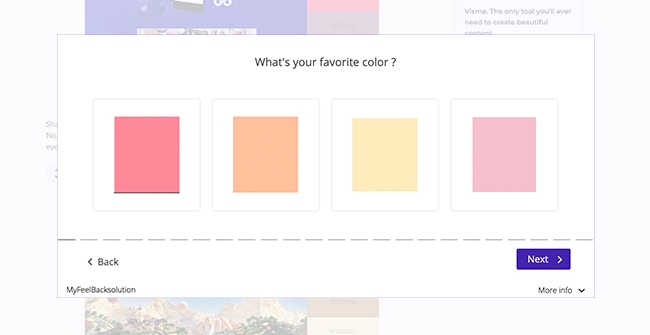When building a customer survey, you have to write both questions and answers. How do you define suitable answer choices for your respondents? This is an important question to consider when designing a survey. Read on for our advice.
Your customer survey answers should answer your own questions
When writing a customer survey, the first question to ask is: what information do I need? What data do I want to obtain from my customers?
The answer to this question will determine a large part of your survey, from the wording and choice of your questions, to the way you define your answer choices.
Always keep in mind the ultimate goal of your survey (customer knowledge). Otherwise, you risk solicitating your customers for nothing, and you will be disappointed when analysing the answers.
Closed-ended answers or open-ended answers? You decide
Let’s start with a reminder about the different forms answers can take in a customer satisfaction survey, or any other questionnaire.
Firstly, a distinction should be made between the choice of open-ended (free-form) and closed-ended questions. Free-form answers are those given to open-ended questions. The respondent is free to answer whatever they like. There are no imposed answer choices. A qualitative approach is required to analyse the verbatim results.

To find out more, discover Why and how to use open-ended questions?
Then, there are closed-ended answers, far more common in a survey. The respondent choses from an imposed choice of answers, written beforehand.
N.B: writing an open-ended question is less complicated and involves less work beforehand, because you don’t need to define any answers. You simply leave the answer field empty. However, there will be a lot more work afterwards when analysing the survey results. The opposite is true for closed-ended questions.
There are three main formats for closed-ended answers
- Binary choices: True / False; Yes / no; Agree / Disagree, etc.

- Multiple choice (with single or multiple answers): What is your favourite colour? Red / Green / Yellow / Blue.

- Response scales, in numerical form: “1 / 2 / 3 / 4 / 5” or not: “Dissatisfied / Somewhat dissatisfied / Somewhat satisfied / Satisfied”.

4 tips for writing survey answer choices
Now that you know the different options available, here are a few tips to make the right decision and to write suitable answers for your survey.
1- Don’t overdo multiple answer choices
When writing a multiple choice question, there are two possibilities; either ask the respondent to give one answer, or several. Generally speaking, we recommend not using multiple answers. Or to limit their use as much as possible.
There are several reasons for this. Firstly, multiple answers are not always necessary. Some questions only call for one answer. The respondent may therefore feel obliged to give several answers, even if only one relates to them. This will result in poor quality answers. The data collected often proves to be less relevant. If a customer gives two answers, how can you know which one is the strongest?
Don’t overuse multiple choice questions with multiple answers. The answers they generate are often more difficult to use. This option should only be used if the question genuinely calls for it, and if you don’t need to know how the different answers provided by the respondent rank.
The readability of the results will also suffer. If you analyse the answers with percentages, the sum of the results will exceed 100%. And since you are likely to share your analysis internally, you won’t always be able to explain the reason for this, potentially leading people to question the reliability of your survey.
2- Your answer choices must be mutually exclusive
You sometimes see surveys with overlapping answer choices. For example, when asking a respondent how old they are, the answers available are: Under 30 / 30 – 35 / 35 – 40. A 35-year-old would not know whether to choose the second or third answer.
To avoid any ambiguity, you must check that all your answers are mutually exclusive.
3- The answer choices must be sufficiently exhaustive
For multiple choice questions, it is important to ensure that the maximum number of possible answers is covered. If, for example, you ask your customer what their favourite colour is, and give a choice of: Red / Pink / Indigo / Fuchsia, your respondent may not find what they’re looking for. In fact, their choice is most likely not on the list!
As a result:
- Either the customer skips the question, which reduces the survey’s response rate and therefore the quantity of data collected.
- Or the customer answers incorrectly, by choosing an answer that does not correspond to them. In this case, the quality of the results is impacted.
To easily cover a wide breadth of answers, the question must be precise. The more precise the question, the easier it is to cover all the possible answers.

4- Select the right value scale for your answer choices
The most frequently asked question about value scales is: how many values should you include? Along with all the other questions that arise. For example: should you opt for an even number of answers (4 – 6), or an odd number (3 – 5 – 7)?
These questions are very difficult to answer, because there is no absolute truth.
Here are a few tips to build a good response scale:
- Think data: do you really need to use a 10 degree scale, such as: Extremely dissatisfied / Very dissatisfied / Somewhat dissatisfied etc.? For most questions, you can obtain highly qualified data with 4 or 5 degrees.
- When the scale is composed by numbers, remember to indicate which is the minimum and maximum value. On a scale of 1 to 5, the respondent should immediately know if 1 is the minimum or maximum value.
- If you want to include a neutral answer, use an odd scale. For example: Dissatisfied / Somewhat dissatisfied / Neither satisfied nor dissatisfied / Somewhat satisfied / Satisfied. This is, in fact, the main example of when odd scales are used.
- For scales composed by words, like the Likert scale (on the degree of satisfaction), respect the symmetry between the degrees of answers. You should for example choose between “rather satisfied” and “somewhat satisfied”, and not use both.
- The last comment is more general: if your survey contains several questions using scales, always use the same one. The response scales used should be as homogenous as possible from one question to the next, to not confuse the respondent.

In conclusion, here is one last essential piece of advice: step into your respondents’ shoes and test your survey on someone who knows nothing about the subject matter. This will allow you to avoid certain mistakes or misunderstandings.
Answer choices are one of the important survey components that require careful consideration. Discover all our other advice about writing surveys in our new guide.



















